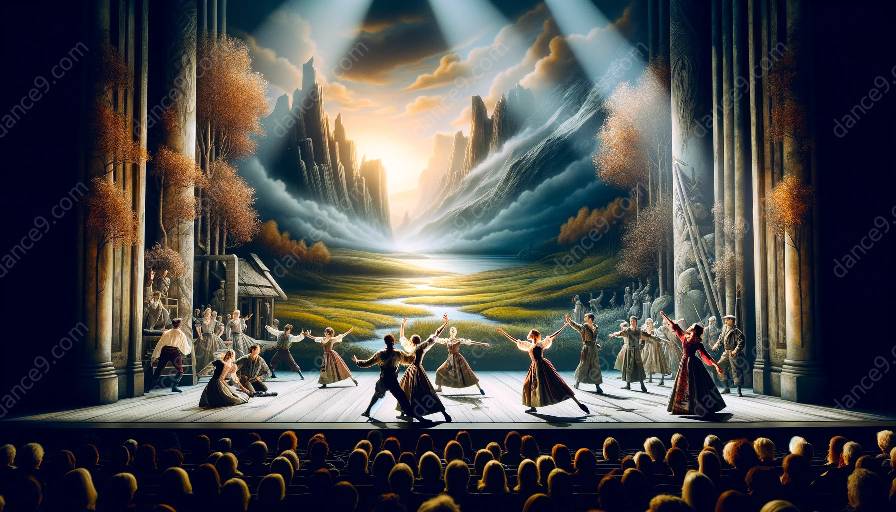Narrative choreography is a powerful form of artistic expression that intertwines movement, storytelling, and societal issues. As choreography extends beyond physical movement into the realm of narrative, it becomes a medium through which socio-political discourse can be reflected, challenged, and amplified.
The Concept of Narrative Choreography
Narrative choreography combines the art of storytelling with the physicality of dance. It encompasses the creation and arrangement of movements to evoke a coherent narrative or thematic idea, often reflecting human experiences, emotions, and cultural dynamics. In narrative choreography, the body becomes a language that communicates and embodies the stories, struggles, and triumphs of individuals and communities.
Contribution to Socio-Political Discourse
Narrative choreography plays a pivotal role in contributing to socio-political discourse by engaging with pertinent social and political issues. Through carefully crafted movements and narratives, choreographers can address themes such as inequality, discrimination, human rights, environmental concerns, and more. By giving voice to these topics, narrative choreography serves as a catalyst for dialogue, empathy, and introspection within society.
One of the primary contributions of narrative choreography to socio-political discourse is its ability to humanize complex issues. By embodying narratives through dance, choreographers provide a tangible and emotional connection to societal struggles, making these issues accessible and relatable to audiences. This humanization fosters empathy and understanding, encouraging audiences to critically engage with socio-political topics from a more personal and emotional standpoint.
Furthermore, narrative choreography has the potential to critique and subvert prevalent social norms and power structures. Through choreographic narratives, artists can challenge dominant ideologies, expose injustices, and offer alternative perspectives that question the status quo. This subversive quality of narrative choreography contributes to the reshaping of socio-political narratives and prompts critical reflection on existing power dynamics and societal constructs.
Engagement and Social Awareness
The performance of narrative choreography inherently draws attention to societal concerns, inviting audiences to participate in a space where socio-political themes are central. This engagement with social issues sparks dialogue and introspection, fostering a deeper awareness of the complexities and nuances within the fabric of society. Moreover, narrative choreography often extends beyond the stage, reaching communities through outreach programs, workshops, and public performances, thus amplifying its impact on socio-political consciousness.
Effect on Identity and Representation
Narrative choreography also contributes significantly to the representation and portrayal of diverse identities within socio-political discourse. Through choreographic narratives, underrepresented voices and experiences can be brought to the forefront, challenging the traditional narratives that have historically marginalized certain groups. This aspect of narrative choreography serves to empower and validate diverse identities, contributing to the ongoing dialogue on inclusivity and representation within society.
Conclusion
In conclusion, narrative choreography intertwines with socio-political discourse in a multifaceted manner, offering a platform for the expression, analysis, and transformation of societal narratives. Through its ability to humanize complex issues, challenge prevailing norms, foster social engagement, and amplify underrepresented voices, narrative choreography continues to be a vital contributor to the socio-political fabric of society.






































